Richard Stanley: 'Audiences don't know if they should laugh, cry or be utterly horrified by Nic Cage'
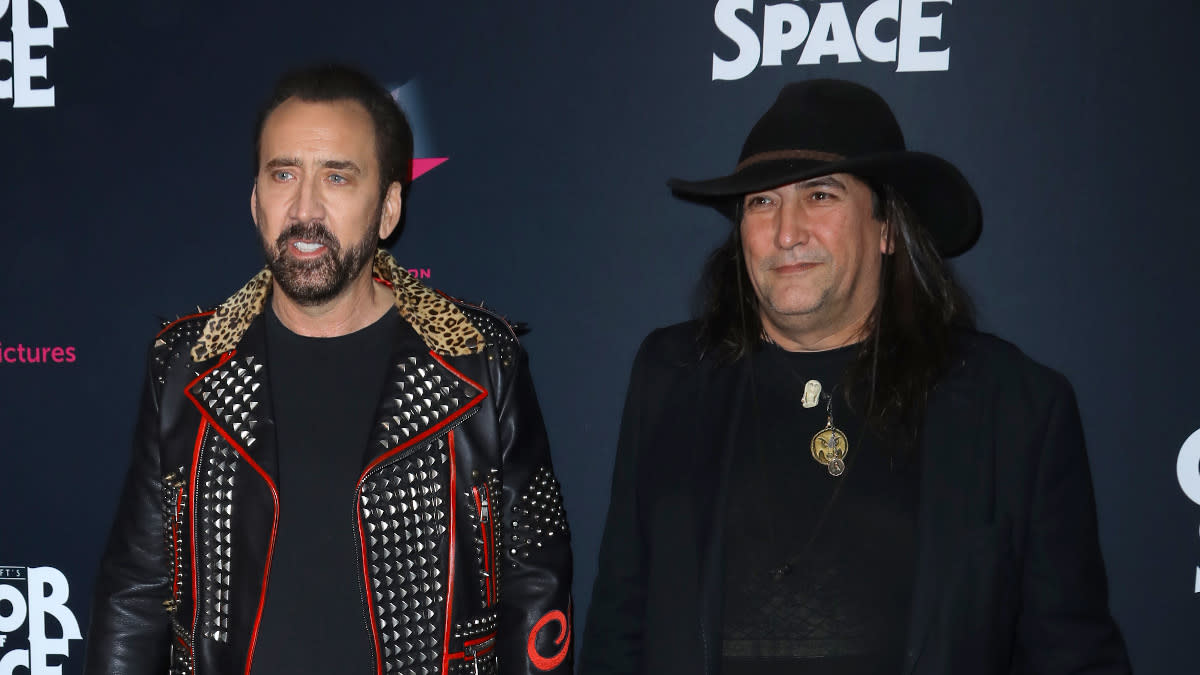
Nicolas Cage has some of the “same edginess as Marlon Brando” on the big screen, according to Color Out of Space (in cinemas and on demand 28 February) director Richard Stanley, who says his screen presence isn’t for everyone.
“He has a very impeccable sense of comic timing and deadpan, insane, surrealist black comedy, which suits me very well,” explains Stanley.
“You don’t know whether you should be laughing or crying or utterly horrified,” he adds.
The star, known for his trademark “Cage Rage” freakouts, plays a mild-mannered alpaca farmer driven insane by the arrival of a magenta-hued meteor in Stanley’s adaptation of the 1927 H.P. Lovecraft short story.
Cult filmmaker Stanley hasn’t directed a fiction feature since his high-profile sacking from the ill-fated 1996 adaptation of The Island of Dr. Moreau, as documented in the 2014 documentary Lost Soul.
He tells Yahoo Movies UK that Cage’s involvement was “crucial” in finally getting his new movie, which had been in development since 2013, over the finish line.
Read more: The crazy story behind legendary flop The Island Of Dr Moreau
“So few people would’ve had the courage to climb on board something like this,” the 53-year-old says.
He adds: “It’s lovely seeing him stepping aside from being a romantic leading man or the action hero to play a character as fundamentally goofy and pathetic and doomed as Nathan — the unfortunate alpaca farmer with daddy issues.”
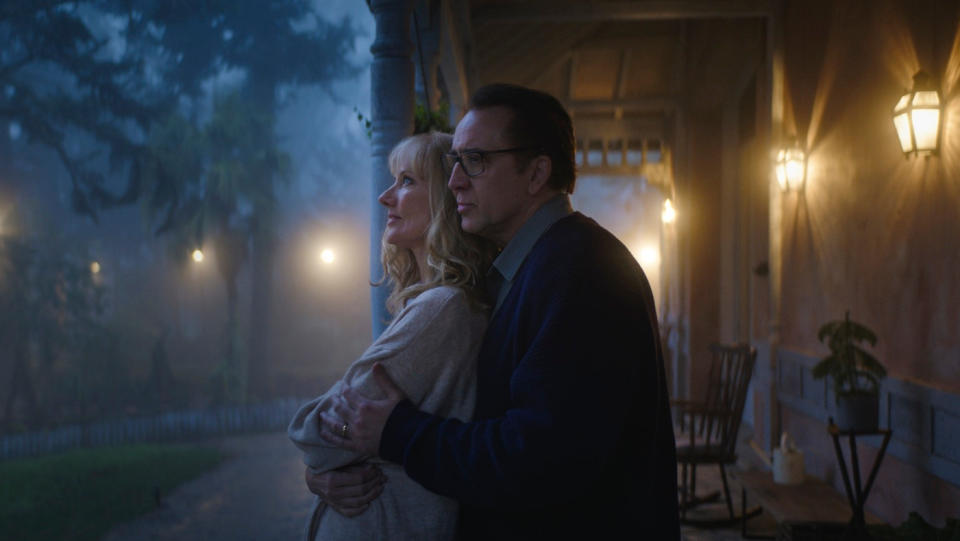
Stanley says Cage went through the script, highlighting opportunities for him to improvise and push the material.
“It was a matter of calibrating that, knowing there was going to be some full on ‘Cage Rage’ moments and letting it happen in a way that was organic to the material and the way the plot develops,” he says.
Read more: Face/Off reboot in the works
Stanley believes that the “kind of apocalyptic black comedy” of Cage’s style suits his own filmmaking methods well.
The director is set to move on to another Lovecraft adaptation next, with an eye on a trilogy of modern adaptations of the 20th century horror maestro’s most memorable works.
Read the full interview with Richard Stanley, discussing how to control Cage on set, the environmental commentary of Color Out of Space and the reasons why he’s so fascinated with the horror genre...
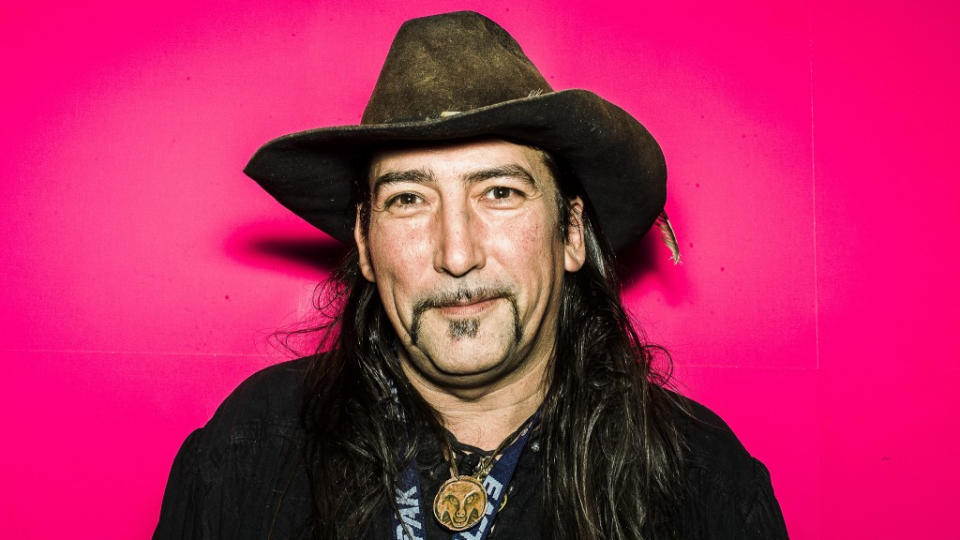
Yahoo Movies UK: This is your first fiction directorial gig in more than 20 years. Why was this the one that brought you back?
Richard Stanley: I guess H.P. Lovecraft’s alien gods were positively inclined towards me. Who knew that there were so many hundreds of thousands of H.P. Lovecraft fans out there who were waiting for this?
Of all of the Lovecraft stories, why was Color Out of Space the one you thought you could tell?
Well I guess I started having thoughts about Color from the time I was a teenager. It’s set on an isolated farmstead in the Miskatonic Valley and concerns the destruction of a nuclear family, whereas pretty much every other one of the great Lovecraft stories is set in Antarctica or on the planet Pluto or at the bottom of the Mariana Trench. So right from the beginning, I thought maybe I had some kind of chance of doing something with Color Out of Space.
You announced this film in 2013. How difficult was it to get this going?
It was a pretty long journey and I guess a lot of people never thought it would be possible. The main problem is just that Lovecraft’s universe means that the only way out for any of the characters is usually death or madness. There’s never a positive learning experience to be had or some kind of reassuring or dignified dramatic arc for any of the characters. So trying to find stars who could inhabit the parts and were prepared to roll the dice on playing characters who come to such terribly unjust and sticky ends proved to be a challenge.
It seems that it really started to get going once Nicolas Cage got involved. How important was he in getting the film made?
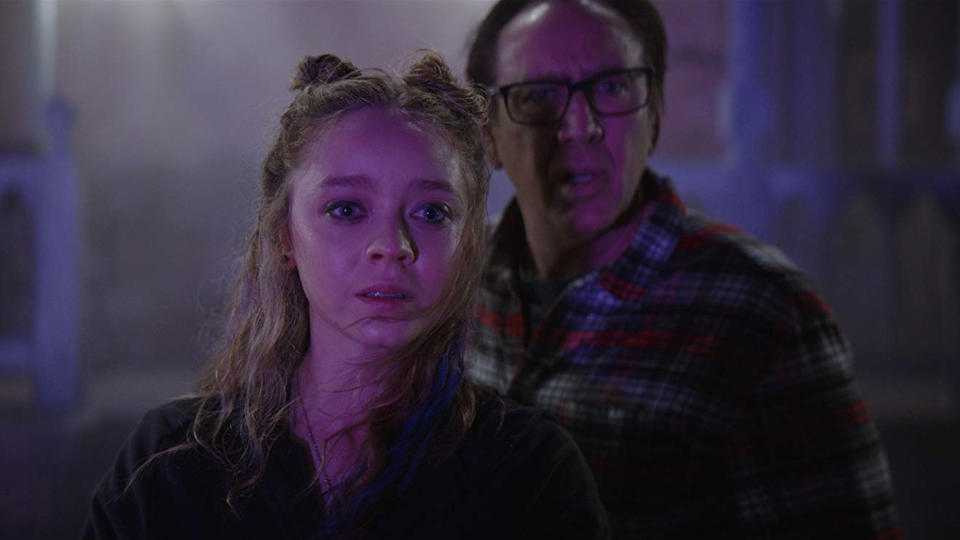
Nic’s involvement was ultimately crucial in getting it made. So few people would’ve had the courage to climb on board something like this. Without wanting to spoil it, the dramatic arc for Nic’s character is anything but heroic. It’s lovely seeing him stepping aside from being a romantic leading man or the action hero to play a character as fundamentally goofy and pathetic and doomed as Nathan — the unfortunate alpaca farmer with daddy issues.
When you’ve got Nicolas Cage in your film, he brings a certain creative force. How much did he shape the film and the character once he became involved?
Very early on, Nic literally highlighted areas in the script where he thought he could improv and push the material further. So quite a long time in advance, we knew that we were going to do something with, for example, the tomato scene or the moment where he wigs out in the car.
Read more: Actors who played more than one role in a movie
With the alpaca milking scene, he’d say: ‘What if I ran amok and threw the alpaca milk at the wall of the building?’ Then we’d discuss it and, in some cases, we’d dial it back. Like, in the alpaca milking scene, he doesn’t throw the milk at the side of the barn and freak out completely too early in the movie.
In other places, it seemed okay to let him roll with the material. So it was a matter of calibrating that, knowing there was going to be some full on ‘Cage Rage’ moments and letting it happen in a way that was organic to the material and the way the plot develops.
Once you see how heavily this film features mad things like alpaca milk, it’s difficult to imagine anyone other than Cage doing it.
I’m amazed I didn’t think of him first off when I wrote the movie. I’ve been wanting to do a movie with Nic for pretty much all of my life. It didn’t initially occur to me, but then it seemed like such a natural mix. He has a very impeccable sense of comic timing and deadpan, insane, surrealist black comedy, which suits me very well. I generally feel that most of my work is a kind of apocalyptic black comedy.
There’s a thing when you’re watching his recent movies where it seems as if the audience doesn’t know how to react to him.
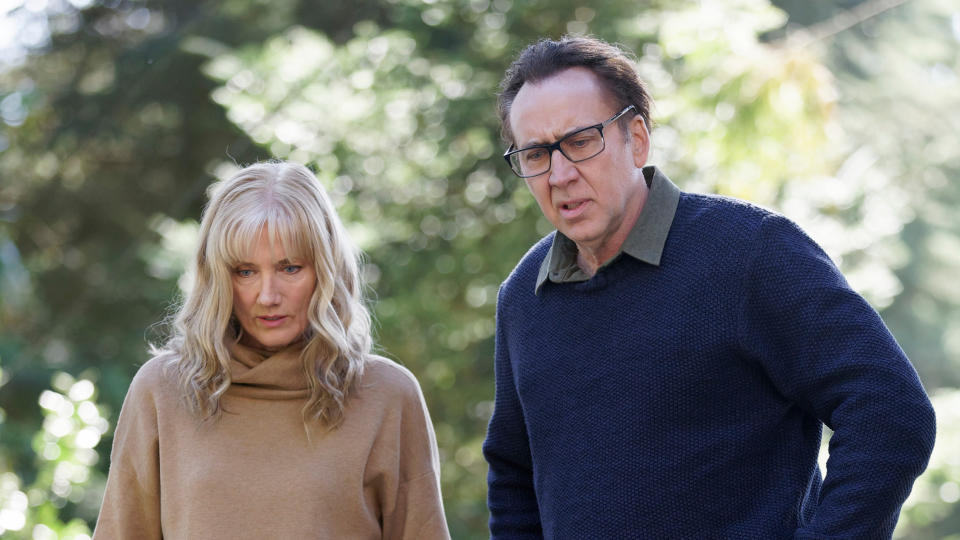
It has been an issue that has freaked some people out and divided a lot of reviewers, but I actually like that quality in Nic. It’s also an uncomfortable area I like to try and steer towards with the overall tone. You don’t know whether you should be laughing or crying or utterly horrified. It’s the same reason why you enjoy the Texas Chainsaw films from Tobe Hooper in the old days.
You alluded to this earlier but, when you’re directing Cage, how much are you doing in terms of letting him go or pulling him back?
Nic has got quite a good sense of it, but I think left to his own devices, you’d be taking it even more full throttle. We really deliberately dialled it back in the first third of the movie and tried to keep things in shades of grey as much as possible rather than going all the way to 10 on the freak-out scale. That was certainly a part of it.
Nic has got some of the same edginess as Marlon Brando and Klaus Kinski, who were both actors who didn’t ever seem to be doing what you expected them to be doing.
There’s something about this story which feels very timely, with its environmental edge. How important was that aspect to you?
It was vital, and a big part of it given I now get a chance to continue the saga and do two more Lovecraft movies in what’s going to be an official trilogy. It means we’re very much dealing with an apocalyptic universe — one in which unknowable, ultra-dimensional, alien deities are gradually taking control of our world.
Read more: Roland Emmerich wants more climate crisis movies
It’s something that’s going to become even more pronounced and, given the current state the world is in, I think that’s very much germane to the material. Lovecraft had a very different view of God and reality. He was an atheist but, at the same time, somehow translated those terrifying, mechanistic forces into these inscrutable, ultra-dimensional alien beings. They seem to be speaking to people’s hearts and minds in the 21st century in a way that maybe they didn’t in the 1920s when the original story was written.

The story behind Color is intensely allegorical and metaphorical, and is about mental images. How hard was it to literalise that on screen into something cinematic?
It seemed crucial to the success of the project to try to reimagine Lovecraft’s Great Old Ones in a way that would make them terrifying and a cogent threat to us now in 2020. I’ve got a plush Cthulhu toy that I sleep with and people have almost made the original Lovecraft stories cuddly over the years. I wanted to make them un-cuddly and turn them back into an implacable threat to humanity’s existence.
That entailed really digging into Lovecraft’s original concepts and to this idea of things which are beyond our perception and coming from outside of our human consciousness and our abilities to even perceive them. Lovecraft’s aliens might not be from another world; they may simply be from some other dimension of our own. They may be complex forces that have always been an essential part of our immediate environment, but which we’ve never perceived and have now bust through into our dimension.
Read more: Guillermo del Toro thwarted again in Lovecraft movie quest
That made me look very carefully at the limits of human perception and the visual spectrum, which runs from ultraviolet to infrared. Magenta, which becomes a default colour for the movie, is almost a neural bridge between ultraviolet and infrared — a halfway point between the two.
Essentially, if anything comes into our world, it has to come in from somewhere. If a sound is coming into our awareness, it’s either going to be a very low-pitched sound that gradually comes up into our perception or it’s going to be a very high-pitched sound that comes down. In the same way, something coming into our visual spectrum, I imagined, had to come in through ultraviolet or infrared, which started to give me ideas as to how to portray this thing. If we couldn’t show the creature itself, we could at least show the closest thing to it we would be able to perceive.
Once you get to the more extreme things you do so, there are some very impressive effects sequences that reminded me of The Thing. Tell me a little about that process.

I’ve always been a colossal fan of John Carpenter, and particularly The Thing, which I think is his masterpiece and probably the most Lovecraftian movie ever, even though it doesn’t come from Lovecraft source material. It sets a very high bar for cinematic monster effects.
It was something we were forced towards, partly because fur is still very difficult for us to deal with in special effects work. Back in the day, it was always a problem for stop-motion because you could see the rippling of the fur under the animators’ fingertips. But in the present day scenario, fur presents issues with the VFX and having to animate all of that fluff. So having furry alpacas was a problem.
Read more: Most exciting movie releases of 2020
In a way, we were forced to go with a skinless look, which pushed us a little closer to the look of The Thing. It was a matter of economics more than anything else.
You mentioned your upcoming Lovecraft trilogy. This one has been well-received, so do you now have the green light to carry on?
It’s looking highly likely that we’ll be seeing the second part pretty soon. I’ve already got a draft. Not wanting to spoil things, it now depends on finding another star to propel the material.

The second one is based on The Dunwich Horror. It concerns a backwoods family who have cross-bred with some kind of ultra-dimensional demon or deity, producing a child savant who is going to basically destroy the world unless someone manages to stop him. To some extent, it’s almost a Lovecraftian antichrist movie.
As well as your well-documented experience on The Island of Dr. Moreau, you wrote a version of J.G. Ballard’s High Rise. What did you think of the Ben Wheatley movie that eventually did come out?
I was a little disappointed. I guess there were various times when the material was just way more extreme and [the film] seemed muted.
With your Lovecraft trilogy ongoing and a potential return to Island of Dr. Moreau in the works, what is it about the horror genre and the darker side of cinema that keeps you coming back?
Well I guess I’ve got some natural capacity for it. A lot of it’s based on the way I see the world. For whatever reason, I seem to be living inside some kind of apocalyptic, supernatural sci-fi novel, or at least that’s how I seem to view everyday life. It’s a kind of weird which has come back into popular taste again. It made sense in the late 80s and early 90s when it was still coming from a real punk sensibility and now some part of that “no future, no future” sensibility seems to be back with us again.
I’m kind of sorry to see it but nonetheless, even if the world’s in awful shape, it may mean that I’ll get a few more movies produced.
Color Out of Space is in UK cinemas and on demand from 28 February.


